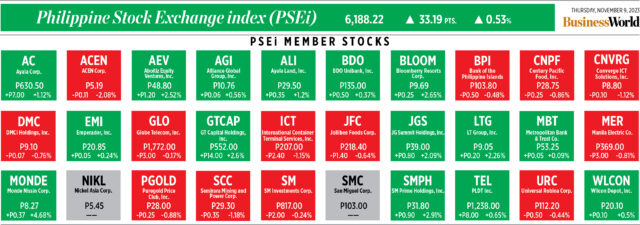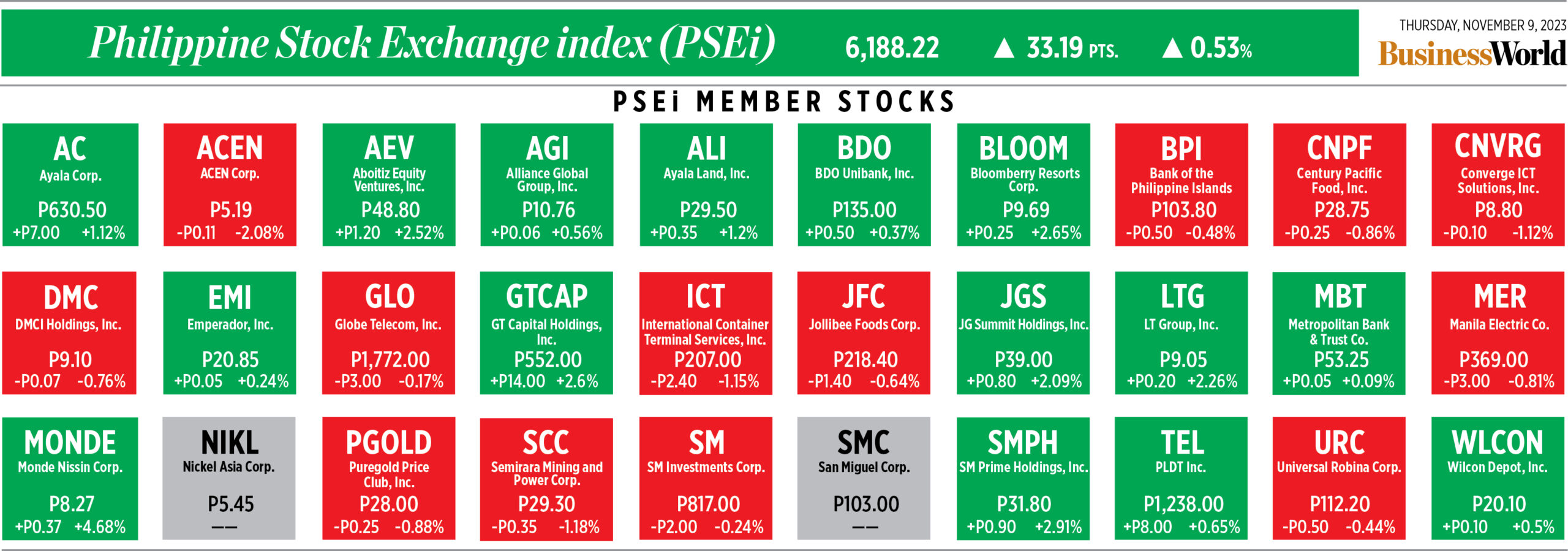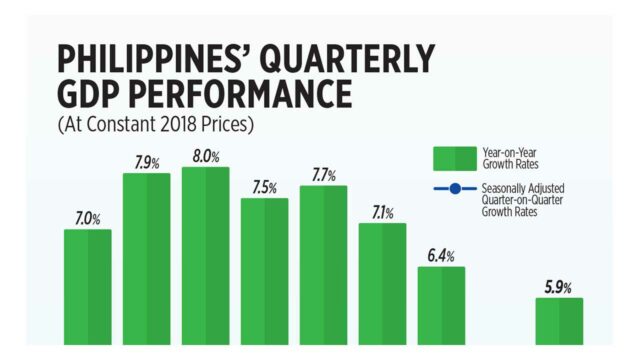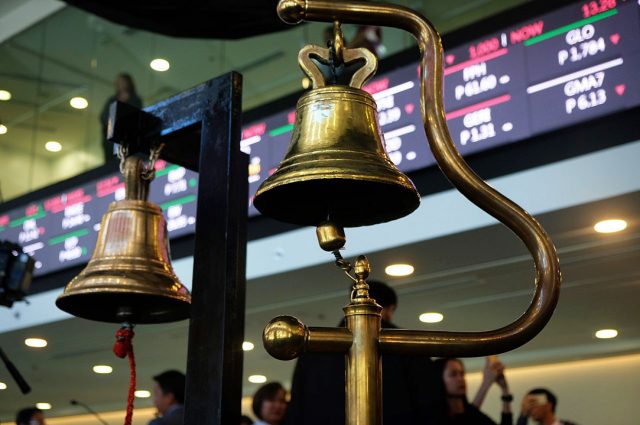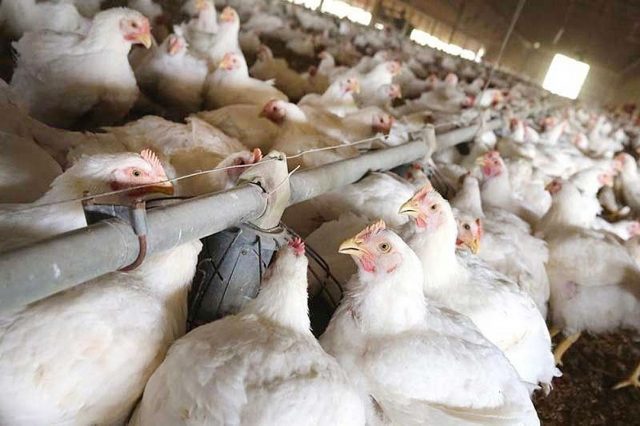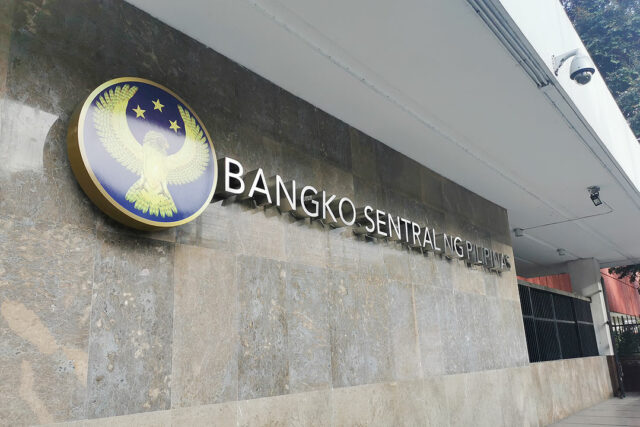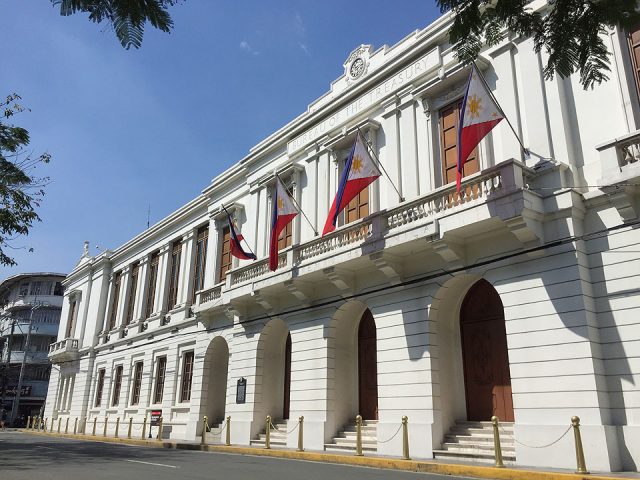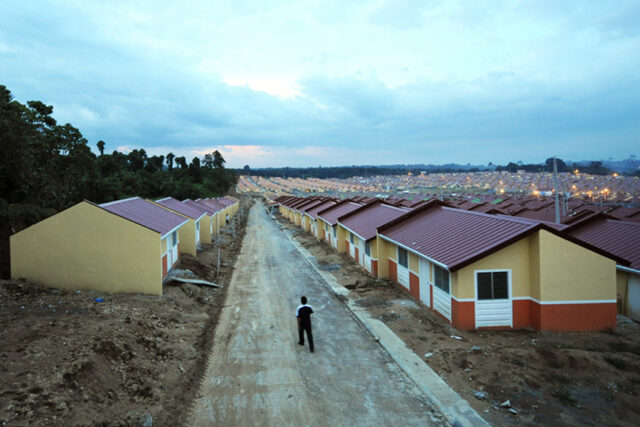Philippines’ quarterly GDP performance
A RECOVERY in government spending helped the Philippine economy bounce back in the third quarter, putting it on track to post the fastest growth in Southeast Asia this year. Read the full story.
PSEi rises after better-than-expected GDP growth
PHILIPPINE STOCKS continued to climb on Thursday as faster-than-expected gross domestic product (GDP) growth in the third quarter boosted market sentiment.
The benchmark Philippine Stock Exchange index (PSEi) went up by 33.19 points or 0.53% to close at 6,188.22 on Thursday, while the broader all shares index rose by 11.87 points or 0.35% to end at 3,329.38.
“The index notched its fifth straight session of gains this month as traders reacted to the stronger-than-expected Philippine third-quarter GDP print,” China Bank Capital Corp. Managing Director Juan Paolo E. Colet said in a Viber message.
The PSEi’s rise was “fueled by investor enthusiasm over the impressive third-quarter GDP figures,” AB Capital Securities, Inc. Vice-President Jovis L. Vistan likewise said in a Viber message.
“Leading up to the GDP report, the market had been establishing a support base, with a gradual alleviation of selling pressure. The prevailing sentiment is marked by reduced apprehension, particularly as geopolitical concerns appear to have been successfully contained, easing initial fears of the war spreading to other Arab nations,” Mr. Vistan added.
Philippine GDP grew by 5.9% in the third quarter, faster than the 4.3% expansion seen in the second quarter, but slower than the 7.7% in the same period a year ago, data released by the Philippine Statistics Authority (PSA) on Thursday showed.
The third-quarter print was well above the 4.9% median GDP growth estimate of 18 economists in a BusinessWorld poll conducted last week.
The agriculture, forestry, and fishing, industry, and services sectors posted increases in the period to contribute to overall growth, the PSA said.
For the first nine months, economic growth averaged 5.5%, still below the government’s 6-7% full-year target.
“Sustained net foreign buying also helped push prices higher. Daily value turnover was below average as many institutional investors prefer to wait for the release of US October inflation data next week,” Mr. Colet added.
Net foreign buying went up to P171.26 million on Thursday from P98.33 million on Wednesday.
Meanwhile, value turnover climbed to P4.63 billion on Thursday with 418.81 million shares changing hands from the P3.76 billion with 341.53 million issues seen on Wednesday.
Most sectoral indices fell on Thursday. Mining and oil dropped by 78.68 points or 0.8% to 9,746.06; services went down by 2.02 points or 0.13% to 1,489.55; financials declined by 0.36 point or 0.02% to 1,773.25; and industrials slipped by 0.15 point to 8,679.69.
Meanwhile, property climbed by 45.87 points or 1.75% to 2,663.08, and holding firms increased by 44.50 points or 0.76% to 5,893.73.
Decliners outnumbered advancers, 96 versus 85, while 46 shares closed unchanged. — SJT
Peso rises to new three-month high on GDP data
THE PESO appreciated to a new three-month high against the dollar on Thursday following stronger-than-expected gross domestic product (GDP) growth last quarter.
The local unit closed at P55.89 per dollar on Thursday, strengthening by 15.5 centavos from its P56.045 finish on Wednesday, based on Bankers Association of the Philippines data.
This was its best close in more than three months or since its P55.74-a-dollar finish on Aug. 4.
The peso opened Thursday’s session stronger at P55.92 against the dollar. Its intraday best was at P55.84, while its weakest showing was at just P55.98 versus the greenback.
Dollars exchanged went up to $1.33 billion on Thursday from $1.24 billion on Wednesday.
The peso gained against the dollar following the release of data showing that Philippine economic growth picked up in the third quarter, Rizal Commercial Banking Corp. Chief Economist Michael L. Ricafort said in a Viber message
“The peso strengthened after the Philippine economy grew by 5.9% annually in the third quarter, which was higher than market expectations,” a trader likewise said in an e-mail.
GDP growth in the third quarter was faster than the 4.3% expansion seen in the preceding three-month period. This also exceeded the 4.9% median estimate of 19 economists in a BusinessWorld poll.
However, third-quarter growth was slower than the 7.7% expansion in the same period last year.
For the first nine months, GDP growth averaged 5.5%, still below the government’s 6-7% full-year target.
The peso was also supported by the continued decline in global crude oil prices, Mr. Ricafort added.
For Friday, the trader said the peso could “appreciate further ahead of a likely downbeat US initial jobless claims report.”
The trader sees the peso moving between P55.75 and P56 per dollar on Friday, while Mr. Ricafort expects it to range from P55.80 to P56. — AMCS
German chamber backs further deregulation to attract more FDI
By Justine Irish D. Tabile, Reporter
THE German Philippine Chamber of Commerce and Industry (GPCCI) said it is looks forward to more deregulation, which will help make the Philippines more attractive to foreign direct investment (FDI) and lower the cost of doing business.
“Transportation costs in general are higher here… be it in airports, seaports, and roads,” GPCCI President Stefan Schmitz said on the sidelines of Mabuhay Germany 2023 briefing, citing the need to make all forms of transport more efficient.
Mr. Schmitz said inefficiencies exact a penalty on the economy, “so, (we are) happy to see that there are necessary investments to improve infrastructure right now,” but added that the efficiencies will come only after some time.
“I think what we want to see is further deregulation … We have seen a good start (but) we have seen (the reforms being) watered down,” he said.
He said that protectionism is normal, but “we’ve seen also in countries that have (shunned protectionism) that deregulation can be an answer. If you allow goods and investment to flow freely, (regardless of) nationality, it will help to alleviate poverty,” he added.
GPCCI Executive Director Christopher Zimmer said that the recent round of liberalizations is definitely bringing more businesses to the Philippines.
“What we have to think about now is how we are going to make this work, because the (time it takes for a law to be made to work as intended) is long. This needs transparency and we are trying to help our members, as well as the Philippine side, to make this work. This is one of our focuses in the future,” Mr. Zimmer said.
Mr. Schmitz said that he expects trade between the Philippines and Germany to beat last year’s total as both countries recover from the pandemic.
“I don’t see any reason why we shouldn’t be surpassing it because we’re back after the (pandemic). There were supply chain problems with China, essentially, but I do think we should be surpassing (previous trade levels). That’s my gut feeling,” Mr. Schmitz said.
In 2022, Germany was the Philippines’ top trading partner in the European Union with total trade valued at $4.7 billion.
Mr. Schmitz said investment is expected in renewables, aviation, logistics, trading and manufacturing.
“The larger ones are certainly in aviation and renewable energy, but we also know a lot of small- and medium-sized companies in logistics, trading and manufacturing. We have major investments in manufacturing that are car-related,” he said.
This year, German representatives from the renewable energy, infrastructure, government and public administration, education, information technology, business consulting and professional services, finance, advertising and marketing, and hospitality industries will attend the Mabuhay Germany trade show on Nov. 16-18 at the World Trade Center.
Agriculture dep’t says to look into declining poultry farmgate prices
THE Department of Agriculture (DA) said it is looking into the farmgate prices of poultry, which are diverging from the rising prices for the commodity at the retail level.
In a statement, Agriculture Undersecretary Deogracias Victor B. Savellano said: “While poultry prices in the wet markets have been increasing, farmgate prices have actually been decreasing.”
Whole chicken in Metro Manila markets sold for between P130 and P200 per kilogram as of Nov. 9, according to the DA.
He said that poultry farmers have been complaining about the low price at which traders buy their produce.
The DA said, the decline in the farmgate price of poultry may have been caused by the “excessive dumping of frozen meat in wet markets.”
He said producers have reportedly been selling younger poultry of 27 or 28 days instead of the typical 30 days to meet demand during the year-end holidays.
The DA has warned against the sale of imported frozen meat being mislabeled as fresh meat in wet markets.
“The risk is in the absence of refrigeration facilities in wet markets and vendors’ lack of knowledge on handling frozen meat,” it said.
Mr. Savellano said the Department of Trade and Industry is helping it crack down on mislabeled meats in wet markets.
“There is no problem with selling imported meat, you just can’t label and selling it as fresh meat,” he added.
To ensure food safety, the DA urged consumers to look for the National Meat Inspection Service seal and the local government’s slaughterhouse documents.
DA Administrative Order No. 6 of 2012 prohibits the sale of frozen meat in wet markets.
“Frozen meat should only be confined to hotels, restaurants, and supermarkets that have refrigeration facilities and handling expertise,” it said. — Adrian H. Halili
NGCP says expenses disallowed by ERC are ‘legitimate business costs’
THE National Grid Corp. of the Philippines (NGCP) said the Energy Regulatory Commission’s (ERC) ruling that disallowed some of the company’s claimed expenses represent a “retroactive” decision that seeks to impose rules after the fact.
“Before you play, you should know the rules, so to apply this retroactively, we think that decision like that lacks fairness,” NGCP Spokesperson Cynthia P. Alabanza said at a briefing on Thursday.
On Wednesday, the ERC released the partial results of its review of the NGCP’s fourth regulatory period, in which it determined that the grid was allowed to generate revenue of P36.7 billion annually for the period known as Phase 1.
This is significantly lower than the P77.56 billion that the NGCP had applied for. The interim Maximum Annual Review (iMAR) had also allowed it to generate revenue of P51.47 billion in March 2022.
iMAR is the maximum amount that NGCP is allowed to take in annually to recover its operational expenses.
“The iMar was approved by the ERC so again, one thing you’re wondering is why the iMAR — which was ERC approved — has been declared incorrect, and lowered,” Ms. Alabanza said.
After the most recent review, the ERC disallowed claims that “were not properly supported by the audited financial statements (AFS)” of the NGCP.
In total, the ERC disallowed some of the NGCP’s operating and maintenance expenses for 2016 to 2020, amounting to about P3.75 billion.
These include expenses for public relations and corporate social responsibility; representation and entertainment; advertising; donations for COVID-19 preventive drives; charitable contributions; and miscellaneous expenses.
Ms. Alabanza said that NGCP’s expenses cited by the ERC are “legitimate business costs under the same rules applied to the National Transmission Corp. (Transco).”
“When you say that it was passed on to the people, but it is a legitimate business expense, that should not be bad, especially if that is contained in the policy that was laid down when we entered the business,” she said.
The NGCP took over the operations and management of the national transmission system from TransCo in 2009 due to the privatization of the power grid operations and maintenance.
In a separate briefing earlier, ERC Chairperson and Chief Executive Officer Monalisa C. Dimalanta said that advertising expenses were disallowed by the regulator because they are not appropriate for monopolies.
“Because NGCP is a monopoly… why do you need to promote? Why do you need to advertise your services if you are a monopoly? Consumers have no choice but to avail of your services and pay your services,” she said.
Ms. Alabanza said that the public relations and advertising expenses are “not a marketing initiative” but involved information campaigns, including safety and right-of-way clearance.
She said that ERC ruling will have a long-term impact not only on the NGCP but on the consumers and other businesses as well.
“At the end of the day, what must be balanced here is the consumer’s concerns and his right to good services at a reasonable price,” she said.
Asked to respond to the NGCP statements, Ms. Dimalanta said: “We still have to take another look if indeed these were allowed for TransCo — but it may not be reasonable to compare TransCo and NGCP because one is a government company, and one is a government concessionaire.”
“If you recall, the government privatized the transmission operations not to simply continue doing what TransCo has been doing but to improve on it, be more efficient and cost-effective and pass on to consumers the benefits of privatization,” she said in a Viber message.
The NGCP were given 15 days to give its comment, Ms. Alabanza said.
Separately, the NGCP said that the Mindanao-Visayas Interconnection Project (MVIP) may experience further delays before becoming fully energized due to a temporary restraining order (TRO) issued against the construction of its Cebu-Magdugo 230-kilovolt (kV) line.
The project was a component of the Cebu-Negros-Panay Stage 3 Backbone Project, which is crucial to the full operation of the MVIP.
The Supreme Court issued the TRO on Sept. 11 in response to the petition filed by the Tourism Infrastructure and Enterprise Zone Authority (TIEZA).
Two tower sites are on TIEZA property, which it intends to develop into a golf course, the grid operator said. NGCP was issued a Writ of Possession for the property in October last year.
The NGCP said that the Cebu-Magdugo 230-kV line is crucial for the utilization of the 450-megawatt transfer of power from the P52-billion transmission project on the Visayas side. — Sheldeen Joy Talavera
LGUs proposed to take on loans worth P43B in H1
LOCAL government units (LGUs) proposed to borrow P43 billion in the first half, up 172% from a year earlier, the Bangko Sentral ng Pilipinas (BSP) said.
In a statement on Tuesday, the BSP said it received a total of 138 requests for Monetary Board opinions (MBOs) on proposed LGU borrowings, against 75 previously.
“The significant increase was likely due to the resumption of government plans and projects a year after the conduct of the national and local elections in 2022,” the BSP said.
The requests were submitted by 109 municipalities (P16.1 billion), 21 cities (P24.1 billion), four provinces (P2.9 billion) and four barangays (P21.5 million), mostly in Central Luzon, Calabarzon, and the Western Visayas.
The central bank also said the Monetary Board processed 126 LGU proposals to borrow worth P41 billion in the first six months. Of these, 11 were carried over from 2022, while 23 requests remain under review.
All LGUs are required to obtain an MBO assessing the impact of their domestic borrowing plans.
According to the central bank, 64% of the loans were to fund infrastructure projects, including public markets, roads and bridges, multi-purpose buildings, commercial centers, healthcare facilities, school buildings, and transport terminals.
The BSP also said loans for heavy equipment and rescue, or service vehicles accounted for 20.5% of the total.
Meanwhile, 15.3% of the loans were intended for the acquisition of lots and site development for the future. About 0.2% of the applications were refinancing exercises.
MB opinions on LGU borrowing is required by Section 123 of Republic Act No. 7653, or the New Central Bank Act of 1993.
“This provision of the law stems from the BSP’s role as the government’s advisor on official credit operations. This process enables the BSP to monitor trends in public-sector debt and assess their impact on the monetary sector and external payments position of the economy,” the BSP added. — Keisha B. Ta-asan
Debt-to-GDP ratio fell to 60.2% at end of 3rd quarter
NATIONAL GOVERNMENT (NG) debt as a share of gross domestic product (GDP) fell to 60.2% at the end of the third quarter, the Bureau of the Treasury (BTr) reported.
This represents a decline from the 61% at the end of the second quarter and the 63.6% posted a year earlier.
The threshold considered by multilateral lenders to be manageable for developing economies is 60%.
“With the latest developments, the NG’s end of year debt ratio is likely to be lower than the 2023 Medium Term Fiscal Framework (MTFF) target of 61.4%,” the BTr said in a statement on Thursday.
“Moreover, the NG debt-to-GDP ratio is on pace to fall below 60% earlier than the 2025 MTFF commitment,” it added.
Outstanding debt totaled P14.27 trillion at the end of September. Year on year, the debt stock rose 5.6%.
The NG’s total debt service bill was equivalent to 8.6% of GDP in the third quarter. This was higher than the 5.8% posted a quarter earlier.
BTr Officer-in-Charge Sharon P. Almanza said in a Viber message to reporters that the improved debt-to-GDP ratio was due to a “combination of lower borrowing due to the lower deficit relative to program for the third quarter and higher GDP.”
The Philippine Statistics Authority (PSA) reported that the economy grew by a stronger-than-expected 5.9% in the third quarter.
In the second quarter, growth had been 4.3%, while the year-earlier reading was 7.7%.
In the nine months to September, GDP growth averaged 5.5%. The government is targeting 6-7% growth this year.
Rizal Commercial Banking Corp. Chief Economist Michael L. Ricafort said that while the lower debt-to-GDP ratio is a welcome development, this may be due to the acceleration of economic growth, which “widened the denominator and effectively reduced the ratio at a faster rate.”
“A break below the 60% threshold is within striking distance soon, provided that the economy continues to grow at a relatively fast rate,” he said in a Viber message.
Meanwhile, the Department of Finance reported that the NG’s budget deficit as a share of GDP stood at 5.71% in the third quarter.
This was higher than the 4.77% posted in the second quarter but lower than the 6.45% reading a year earlier. During the first nine months, the NG’s budget deficit narrowed by 2.89% to P983.5 billion.
This year, the government has set a budget deficit ceiling of P1.499 trillion, equivalent to 6.1% of GDP. — Luisa Maria Jacinta C. Jocson
PHL joins OECD framework on base erosion, profit shifting
THE Department of Finance (DoF) said the Philippines has become a member of the Organisation for Economic Cooperation and Development (OECD)/G20 Inclusive Framework on Base-Erosion and Profit Shifting (BEPS).
The DoF said it hopes to “uphold tax fairness, protect the country’s tax base from aggressive tax avoidance schemes, and promote international tax cooperation.”
The BEPS initiative seeks to deter multinational companies from recognizing an outsized share of profit in low-tax countries, depriving high-tax jurisdictions of a fair share of revenue.
“The Inclusive Framework on BEPS is mandated to spearhead the effective implementation of the BEPS Project, including conducting peer reviews of the BEPS minimum standards, monitoring the other BEPS Actions, and leading the ongoing standard-setting work,” the DoF said.
The framework currently has 143 member jurisdictions and 14 observer organizations.
“The Philippines looks forward to the partnership that it will have with the OECD and the members of the Inclusive Framework on BEPS in ensuring tax fairness and transparency and pushing for international tax reforms that benefit all nations,” Finance Secretary Benjamin E. Diokno said.
“As a developing economy, it is essential that we ensure that the rules set are administratively feasible and secure equitable taxing rights,” he added. — Luisa Maria Jacinta C. Jocson
Malampaya exploration raises prospect of gas supply expansion, BMI says
GAS RESERVES and production may expand depending on the success of renewed exploration activity around the Malampaya gas field, Fitch Solutions BMI Country Risk & Industry Research said on Thursday.
“Based on the review of current exploration, the long-term outlook for upstream oil and gas production now hinges on the success of further exploration of the Malampaya gas field,” Fitch Solutions BMI said in a report.
Fitch Solutions unit BMI noted that the extension of the exploration contract for the Malampaya gas field “raises hope for potential increase in gas reserves and production.”
In May, President Ferdinand R. Marcos, Jr. and representatives of the Malampaya Consortium signed an agreement renewing Service Contract (SC) 38, which covers the Malampaya gas field off northern Palawan.
SC 38 was set to expire on Feb. 22, 2024. Under the new agreement, the contract has been extended until Feb. 22, 2039.
“We have raised the outlook for gas production from the Malampaya gas field since investors plan to accelerate exploration activity in the SC38 block,” BMI said.
The Malampaya gas field is the country’s only indigenous commercial source of natural gas. It is expected to be largely depleted of easily recovered gas using current techniques by 2027.
The Malampaya consortium is composed of Prime Energy, a subsidiary of Prime Infrastructure Capital, Inc., Udenna Group’s UC38 LLC, and the state-owned Philippine National Oil Energy Corp.
The consortium has committed $600 million worth of additional investment to drill two wells and subsea facilities.
Asked to comment, Avril de Torres, deputy executive director of the Center for Energy, Ecology, and Development, said that the renewal of SC 38 and the plans to ramp up imports of liquefied natural gas are “contrary to climate science and consumer welfare.”
Ms. Torres added that it “makes no economic sense as renewables are already capable of addressing our energy needs in a more affordable manner.”
“We hope the administration finds the political will to do what is necessary to completely eliminate fossil fuels from our energy mix and to lead a genuine transition to a renewable energy future,” she said in a Viber message.
BMI also said that despite the government’s encouragement of investment to tap undiscovered oil and gas reserves, it still faces the challenge of funding capital-intensive exploration projects.
“The government has repeatedly announced it will raise spending on oil and gas exploration activities, but much has not been done,” BMI said.
BMI said that the loss of oil and gas revenue from lower oil and gas production has affected the government’s fiscal space and its ability to fund exploration activity.
“Currently, the bulk of oil and gas revenue derives from the sale of gas from the Malampaya project, where dwindling gas reserves and production could adversely affect the government’s financial strength,” it said.
BMI said offshore exploration may continue to be hampered by the ongoing maritime disputes with China.
“The Philippines is obviously running out of oil and gas reserves in onshore areas; offshore is now the only potential source of oil and gas reserves,” it said.
“However, ongoing maritime disputes with China are hampering efforts to attract foreign investment and enhance exploration efforts,” it added. — Sheldeen Joy Talavera
Gov’t mortgage finance co. backs tax exemption for securitization activities
STATE-OWNED National Home Mortgage Finance Corp. (NHMFC) told Congress on Thursday that it supports a proposal to exempt from income tax its securitization of low-cost housing mortgages.
“All NHMFC issuances, all transactions and documents involving the sale and transfer/re-transfer of assets, collateral and security interests related thereto (to and from it or its special purpose entity), all other securities related to such securitization transactions, and all secondary trades and subsequent transfers of asset-backed securities… (are requested to be eligible for) all the tax and other exemptions and incentives/benefits under the Securitization Act,” the NHMFC President Renato L. Tobias said in a position paper submitted to the House committee on housing and urban development.
The committee is evaluating House Bill No. 2766, which seeks to establish a single housing development fund.
The measure aims to promote the securitization of mortgages and housing-related receivables of government housing agencies and private entities, as well as encourage more investment — especially from the private sector — in housing finance.
The bill also seeks to allow the use of housing bonds and other instruments issued by the NHMFC as payment for taxes.
Scranton Orcullo of the legal and legislative division of the Bureau of Internal Revenue (BIR) countered however that paying for taxes in cash would help provide the government with immediate funds.
“Accepting taxes in cash is vital for the government (to) readily access funds to cover its expenses and programs,” he told the panel.
The committee is also considering bills seeking to create a National Housing Development, Production and Financing Program, as well as measures seeking to institutionalize the government’s Pambansang Pabahay Para sa Pilipino Program. — Beatriz Marie D. Cruz

